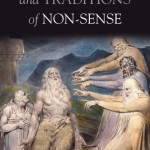We run our website the way we wished the whole internet worked: we provide high quality original content with no ads. We are funded solely by your direct support. Please consider supporting this project.

Did Yahweh Crush His Son?
Though Isaiah was probably referring to the nation of Israel as Yahweh’s “suffering servant” when these words were penned, the NT authors as well as other early church fathers interpreted this servant to be a prophetic reference to Christ. Speaking proleptically, Isaiah declares that this suffering servant was “punished” and “stricken by God” (Isa 53:4, cf., v. 8) and states that “it was the LORD’s will to crush him and cause him to suffer” (vs. 10). The passage thus seems to depict Yahweh as the one who “pierced” his servant “for our transgressions” and who “crushed” his servant “for our iniquities” (vs. 5).
At the same time, while Isaiah ascribes violent verbs to God, he also describes the suffering this servant underwent as the result of humans afflicting him. It was humans who “despised and rejected” this servant as they “hid their faces” from him (v. 3). It was before accusing humans that this servant “did not open his mouth” (v. 7), and it was violent humans who “oppressed and afflicted” this man (v. 7). So too, it was by human “oppression and judgment” that this man “was taken away … cut off from the land of the living” and “was assigned a grave with the wicked” (vv. 8-9). And it was humans from among “his generation” who failed to protest this man’s unjust treatment at the hands of other humans (v. 8). It is thus clear that for Isaiah, as much as for NT authors, Christ was “afflicted” by God only in the sense that it was God who delivered him over to violent humans to experience the death-consequences of our transgressions.
Why then does Isaiah say that the suffering servant was “punished” and “stricken by God” and that “it was the LORD’s will to crush him and cause him to suffer”? I would like to propose that the Father allowed himself to be portrayed as doing something he merely permitted for the same reason the Son takes on an appearance that makes him look guilty of crimes he merely allowed. In this case, the Father’s willingness to take on the semblance of the one who afflicted his Son is simply the flip side of the Son’s willingness to take on the semblance of one who deserved to be afflicted.
This is not to suggest that Isaiah or his original intended audience understood the matter this way. There are plenty of other passages in Isaiah that clearly reflect a pen-ultimate, sub-Christlike understand of Yahweh’s character. Isaiah clearly did not think Yahweh was above engaging in horrific violence. We can discern the humble, stooping cruciform God in the depth of these violent portraits. Here, we can also discern how God the Father was stooping to wear the mask of someone who is responsible for wrongdoings that he merely allowed, just as he does on the cross. The Creator, in other words, is taking responsibility for all that comes to pass in his creation, including the unjust suffering of his beloved servant.
Photo credit: KayVee.INC via Visual Hunt / CC BY-NC-SA
Category: General
Tags: Cruciform Theology, Jesus, Violence
Topics: Attributes and Character
Related Reading

Who Rules Governments? God or Satan? Part 2
In the previous post, I raised the question of how we reconcile the fact that the Bible depicts both God and Satan as the ruler of nations, and I discussed some classical ways this has been understood. In this post I want to offer a cross-centered approach to this classical conundrum that provides us with…

God of Sense and Traditions of Non-Sense
As the title suggests, in his book, God’s Problem: How The Bible Fails to Answer Our Most Important Question – Why We Suffer, Bart Ehrman argues that the Bible has nothing compelling to say about the problem of evil. Well, I just put down a beautifully written four-hundred and fifty page book that compellingly argues…

The Key to Understanding Revelation
The most important key to interpreting John’s violent imagery is found in the heavenly throne room scene in chapters 4-5. (For the first entry in this series on the violence in Revelation, click here.) This throne room represents heaven’s perspective on events that are occurring on earth, which is contrasted throughout Revelation with the false…

Jesus is the Center of the Story
The previous post addressed how the revelation of Christ is the surprising twist that reframes how we must read all that precedes it. Today we’ll look briefly at five supports to this claim. Jesus said, “I have a testimony greater than that of John” (John 5:36). Jesus elsewhere claims that “among those born of women…

The Centrality of the Cross in Church History
Some readers of Crucifixion of the Warrior God may be assuming that the emphasis I’m placing on the cross is unprecedented in church history. While I will not deny that the cross-centered approached to interpreting Scripture’s violent divine portraits is new, the fact that I’m placing the cross at the center of my understanding of…

The Destiny of God’s People
Jesus represents the realization of God’s glorious dream for humanity. In Christ, we see what we who are in Christ are destined to be. As a stick placed in a river is destined to be carried to whatever body of water the river runs to, so all who have allowed themselves to be drawn by…
